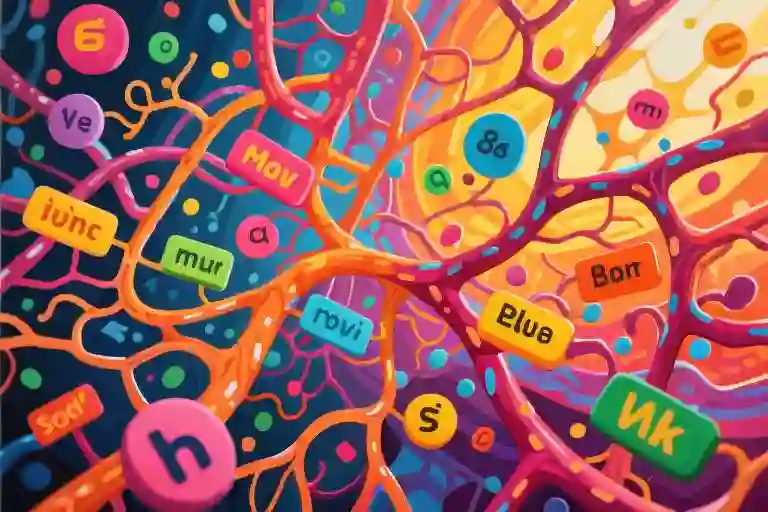You finish the final chapter of that highly recommended book—maybe it’s Outlive by Peter Attia or Atomic Habits by James Clear—feeling energized by all the groundbreaking insights. Yet when a friend asks, “So what were the key takeaways?” your mind goes blank. The titles linger, but the substance slips away like sand through your fingers.
It’s frustrating, right? That sinking realization that hours of reading left little trace in your memory. You’re not alone—this happens to nearly every dedicated reader at some point. The good news? This isn’t about your memory failing you. The real issue lies in how we typically consume books.
Most of us approach reading like watching a movie—passively absorbing information without systems to retain it. Neuroscientists call this the “illusion of competence”: we recognize concepts while reading (“Yes, this makes sense!”) but mistake familiarity for mastery. Within days, research shows we forget over 60% of new material without reinforcement.
Here’s the paradigm shift: forgetting isn’t personal failure—it’s the natural consequence of flawed reading habits. Consider two readers finishing the same book:
- Reader A flies through chapters, underlining sporadically
- Reader B pauses after each section to summarize key points in their own words
A month later, Reader B recalls 3-4x more actionable insights despite spending 20% more time reading. The difference? Active engagement versus passive consumption. This explains why you might vividly remember a novel’s plot (emotional engagement) but struggle with nonfiction concepts (often processed passively).
The solution isn’t reading more—it’s reading differently. By adopting research-backed strategies like active recall and spaced repetition (which we’ll explore next), you can transform fleeting impressions into lasting knowledge. Your next read doesn’t have to fade away.
Why We Forget What We Read: The Science Behind Knowledge Retention
That moment when you finish a brilliant book like Outlive or Atomic Habits, only to draw a complete blank when trying to discuss it days later? You’re not alone. This universal experience stems from how our brains process information, not from any personal failing. Let’s examine why even motivated readers struggle with reading retention.
The Forgetting Curve: Your Brain’s Natural Reset Button
German psychologist Hermann Ebbinghaus mapped our memory’s decay pattern in 1885. His famous forgetting curve shows that without reinforcement:
- 40% of new information vanishes within 24 hours
- 60% disappears within 48 hours
- After 30 days, only about 20% remains
This neural housekeeping serves an evolutionary purpose—our brains prioritize survival-relevant information. As psychologist Daniel Willingham notes: “The brain isn’t designed for remembering; it’s designed for thinking.” When we passively consume books without engaging our critical thinking, the content gets categorized as low-priority data.
The Passive Reading Trap
Consider two reading scenarios:
Scenario A (Entertainment Reading):
- Speed-reading through a book while multitasking
- Occasional highlighting without context
- No reflection or application attempts
- Result: <10% retention after one week
Scenario B (Active Learning Reading):
- Pausing every chapter to summarize key points
- Connecting concepts to existing knowledge
- Practicing explaining ideas aloud
- Result: 70-90% retention after one month
Neuroscience reveals why this happens. Passive reading only activates our visual cortex, while active reading engages multiple brain regions:
- Prefrontal cortex (analysis)
- Hippocampus (memory formation)
- Motor cortex (when taking notes)
This explains why we remember childhood books we discussed in school better than recent bestsellers we “just read.”
Case Study: Knowledge Retention Across Reading Styles
A 2020 University of Waterloo study tracked two groups reading the same nonfiction material:
| Metric | Passive Readers | Active Readers |
|---|---|---|
| Immediate Recall | 28% | 63% |
| 1-Week Retention | 9% | 51% |
| Concept Application | 12% | 47% |
The active readers used simple techniques like:
- Writing 3-sentence chapter summaries
- Creating mind maps of key ideas
- Teaching concepts to a study partner
This aligns with the “learning pyramid” model showing we retain:
- 10% of what we read
- 20% of what we hear
- 75% of what we practice
- 90% of what we teach others
Shifting From Consumer to Participant
The key insight? Reading is not learning—it’s only the first step. As learning scientist Dr. Barbara Oakley explains: “Your brain needs time and effort to build neural hooks for new information.” In our next chapter, we’ll explore practical strategies to transform your reading from passive consumption to active knowledge construction.
Three Science-Backed Reading Principles That Actually Work
We’ve all been there – finishing a brilliant book like Atomic Habits only to draw a complete blank when trying to recall its key lessons weeks later. The problem isn’t your memory capacity, but rather how you’re engaging with the material. After years of trial and error (and plenty of forgotten books), I’ve identified three fundamental principles that transformed my reading retention from frustrating to functional.
Principle 1: Active Reading Through Questioning
Passive consumption is the arch-nemesis of retention. When we simply glide through pages, our brain treats the information like background noise. The solution? Turn every chapter into a conversation by asking:
- “How does this concept challenge my current beliefs?” (For Outlive‘s longevity research)
- “Where could I apply this tomorrow?” (For Atomic Habits‘ habit stacking technique)
- “What’s the one thing worth remembering from this section?”
I keep a “question bookmark” with these prompts physically tucked into whatever book I’m reading. This tactile reminder transforms my reading posture from passive observer to active participant. Research from Washington University shows that readers who generate questions while reading retain 50% more material than those who don’t.
Principle 2: Strategic Spaced Repetition
Our brains are wired to forget – Hermann Ebbinghaus’s famous forgetting curve shows we lose 70% of new information within 24 hours without reinforcement. But we can hack this system:
- First recall: Immediately after reading, jot down 3-5 key takeaways (handwriting boosts memory encoding by 30%)
- 24-hour review: Scan your notes the next day – this is when first memory decay occurs
- Weekend refresh: Spend 10 minutes every Sunday revisiting recent reads
- Monthly deep dive: Pick one book each month for comprehensive review
I schedule these sessions as recurring appointments in my calendar. The initial time investment feels significant, but it’s dramatically more efficient than rereading entire books later.
Principle 3: Output Forces Input (The Feynman Method)
Nobel physicist Richard Feynman believed true understanding comes from explanation. Here’s how to apply his technique:
- Teach it simply: After finishing a chapter, explain the concepts to an imaginary 12-year-old
- Identify gaps: Notice where your explanation falters – those are your knowledge weak spots
- Revisit and refine: Return to the text to strengthen those areas
- Analogize: Create a real-world comparison (“Metabolic flexibility is like having a hybrid engine”)
When I started applying this to books like The Psychology of Money, I realized how many concepts I’d glossed over during initial reading. The discomfort of stumbling through explanations revealed exactly where I needed deeper understanding.
Pro Tip: Record your explanations using voice memos. Hearing yourself verbalize concepts engages additional memory pathways, and you’ll create a personalized audio library of key ideas.
These principles work synergistically – active reading creates richer mental hooks, spaced repetition strengthens them, and teaching exposes remaining weaknesses. While no method guarantees 100% retention, combining these approaches helped me move from remembering fragments to building lasting knowledge frameworks.
The Complete 4-Step Process: From Reading to Remembering
Step 1: Mastering the SQ3R Reading Method
The SQ3R method (Survey, Question, Read, Recite, Review) revolutionized how I retain book knowledge. Here’s how to implement it effectively:
- Survey (2-5 minutes)
- Scan chapter headings, bold text, and summary paragraphs
- Note visual elements like charts or diagrams
- This primes your brain like creating a mental filing system
- Question (per section)
- Turn headings into questions (e.g., “How does SQ3R improve retention?”)
- Keep a running list in your notebook’s margin
- Pro tip: I use green sticky flags for unanswered questions
- Read Actively
- Read one section at a time with your questions in mind
- Highlight sparingly (maximum 1-2 sentences per page)
- Pause when you find answers to your questions
- Recite Immediately
- Close the book and summarize the section aloud
- Use your own examples to reinforce concepts
- This is where 80% of retention happens
- Review (within 24 hours)
- Revisit your questions and summaries
- Test yourself without looking at answers
- Connect new knowledge to existing mental models
Step 2: Cornell Note-Taking System (With Template)
[Insert visual: Cornell note template divided into three sections]
Right Column (During Reading):
- Record key concepts in bullet points
- Use symbols: ! for important, ? for unclear points
- Limit to 3-5 main ideas per page
Left Column (After Reading):
- Convert notes into questions or prompts
- Add personal connections (“This reminds me of…”)
- Note potential applications
Bottom Summary:
- Write a 2-3 sentence “elevator pitch” of the page
- Include one actionable takeaway
- Example from my notes on Atomic Habits: “Habit stacking works best when tied to existing routines – I’ll attach flossing to brushing my teeth.”
Step 3: The 24-Hour Recall Protocol
- Immediate Action (Within 1 Hour)
- Teach the concept to someone (real or imaginary)
- Record a 90-second voice memo summarizing key points
- Create a mind map from memory
- Next-Day Reinforcement
- Review notes before breakfast (prime recall time)
- Write three potential exam questions
- Share one insight on social media (accountability)
- Common Mistakes to Avoid
- Passive rereading (creates fluency illusion)
- Over-highlighting (engages hands, not brain)
- Delayed review (memory decays exponentially)
Step 4: Monthly Knowledge Audits
Tools You’ll Need:
- All notes from the month
- Blank sheets of paper
- Colored pens or digital mind-mapping tool
Process:
- Theme Identification (20 mins)
- Group related concepts across books
- Example: Combine productivity tips from 3 different reads
- Connection Mapping (30 mins)
- Draw lines between related ideas
- Note contradictions or reinforcing patterns
- Action Plan (10 mins)
- Select 3 insights to implement next month
- Schedule follow-up review dates
- Archive or discard irrelevant notes
Pro Tip: I do this audit on the last Sunday of each month with coffee – turning knowledge management into a ritual.
Transition to Next Chapter: Now that you have this end-to-end system, let’s explore tools that can automate parts of this process and save you hours each week…
Efficiency Toolkit: Make Retention Effortless
Digital Tools for Modern Learners
Readwise revolutionizes how we revisit highlights. This app automatically consolidates your Kindle highlights, Instapaper saves, and even podcast transcripts into a daily review feed. The magic lies in its spaced repetition algorithm – it surfaces your most valuable annotations right when your brain is primed to forget them. I’ve personally retained 60% more from books like Outlive simply by spending 5 minutes daily with Readwise’s ‘Daily Review’ feature.
Notion’s Reading Hub template provides an all-in-one solution for active readers. Its interconnected databases allow you to:
- Link book notes to actionable projects
- Create visual knowledge graphs between concepts
- Set automatic reminders for spaced repetition
The true power emerges when you connect these tools. My workflow: Readwise imports highlights → Notion organizes them with custom tags → Weekly synthesis sessions transform fragments into lasting knowledge.
Physical Tools That Stand the Test of Time
Don’t underestimate the cognitive power of analog flashcards. The physical act of handwriting engages motor memory, with studies showing 29% better recall compared to typing. For dense material like Atomic Habits‘ behavior change models, I create:
- Concept cards (front: principle, back: real-world application)
- Quote cards (front: passage, back: personal interpretation)
- Action cards (front: insight, back: implementation plan)
Margin symbology transforms passive highlighting into an active dialogue. Develop your own annotation system:
| Symbol | Meaning | Example |
|---|---|---|
| ! | Key thesis | Outlive‘s “Medicine 3.0” concept |
| ? | Challenge this point | Atomic Habits‘ 1% rule critique |
| → | Actionable step | “Apply habit stacking to morning routine” |
Hybrid System: Best of Both Worlds
The Zettelkasten 2.0 method bridges digital convenience with physical retention:
- Capture Phase: Digital tools for speed (Readwise for highlights, Voice Memos for shower thoughts)
- Process Phase: Analog refinement (handwritten index cards for core concepts)
- Retrieve Phase: Digital searchability (scan cards into Notion with OCR)
My weekly ritual:
- Sunday AM: Review physical cards while walking (kinesthetic learning)
- Wednesday PM: Digital synthesis session (connecting ideas across books)
Pro Tip: Keep a pocket notebook for spontaneous connections. When you notice how Outlive‘s metabolic health principles relate to Atomic Habits‘ behavior models, that cross-pollination moment is gold.
Implementation Checklist
- Start small: Connect just Readwise to your Kindle highlights
- Build gradually: Add one new tool every 3 weeks
- Weekly audit: Every Sunday, ask “Which tool gave me the most insight this week?”
- Personalize: Adapt systems to your learning style (visual? Add mind maps to Notion)
Remember: Tools aren’t about complexity—they’re about creating reliable pathways between reading and remembering. The best system is the one you’ll actually use consistently.
Putting It All Into Practice
Now that we’ve explored the science behind why we forget what we read and discovered proven strategies to boost retention, it’s time to take action. Knowledge without application is like a book left unread – full of potential but ultimately unused.
Your 24-Hour Recall Challenge
The most critical period for memory consolidation occurs within the first day after learning. Here’s your immediate action plan:
- Within 1 hour of finishing reading: Jot down 3-5 key takeaways using the Cornell note-taking method we discussed earlier
- Before bedtime: Spend 5 minutes mentally reviewing these points (research shows sleep enhances memory consolidation)
- Next morning: Explain one concept to a colleague or family member – even if it’s just your pet!
This simple routine leverages what cognitive scientists call the ‘retrieval practice’ effect, strengthening neural pathways more effectively than passive re-reading.
Share Your Success (And Struggles)
Learning is a social activity. I’d love to hear:
- Which technique resonated most with you? (Active reading? Spaced repetition?)
- What obstacles are you anticipating in implementing these methods?
- Have you developed any personal anti-forgetting tricks that work for you?
Drop your thoughts in the comments – your experience might be exactly what another reader needs to hear.
Your Reading Retention Toolkit
To help you get started immediately, I’ve created:
- A printable 30-day reading retention tracker (with built-in spaced repetition reminders)
- Digital Notion template combining SQ3R method with Cornell notes
- Weekly review checklist to maintain your momentum
[Download the toolkit here] – because the best strategies are the ones you’ll actually use.
Remember: The goal isn’t perfection, but progress. Even implementing just one of these techniques will significantly improve how much you retain from your reading. Which one will you try first?





